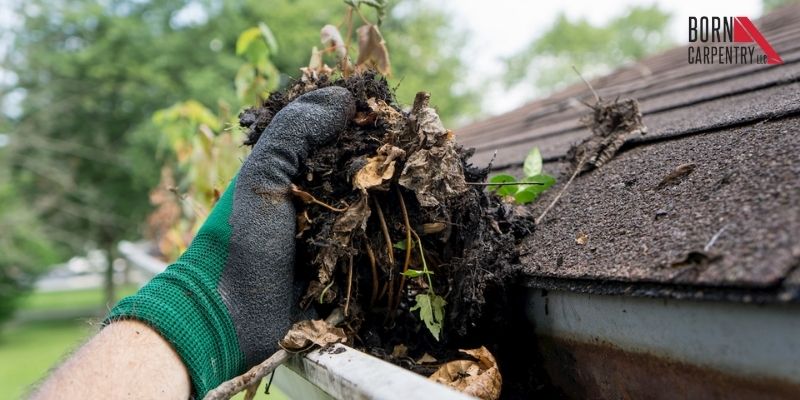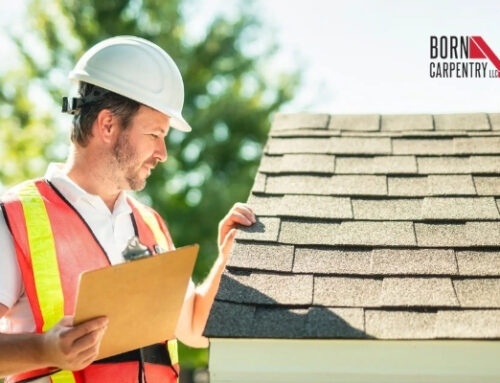Routine and proper maintenance of your roof is necessary if you want to protect the roof from possible causes of damage. Also, regular roof inspection allows you to detect minor issues and prevent them from progressing. If neglected, these problems can lead to significant problems in your home. These problems may necessitate the need for roof replacement or costly repairs.
Heavy rains and strong winds can damage your roof. You have to protect it before a storm occurs. Safeguarding it will maintain its lifespan and that of your entire home. There are a few tasks that you can perform to prevent your roof from falling apart during storms.
Here are 9 steps you can take to protect your roof from storm damage…
1- Trim Trees
Check your yard for trees and branches that are potential damage risks to your home and cut them before the harsh weather seasons like winter. Cut down large trees near your home and branches hanging over your house. Strong winds can blow them off and onto your roof! Besides, tree branches that reach the top of your house may dislodge the shingles. Water can seep through the displaced shingles during heavy rainfall.
2- Use Protective Covering
You can protect your roof from storm damage by covering it with a protective material such as plywood. It would be best to use plywood treated with a water-resistant product to prevent leaks. You can also use asphalt shingles to protect your roof. However, they are prone to splits and cracks. You have to replace them once they get damaged to avoid leaks.
Roof sheets can protect your roof from water and winds. If properly installed and sealed, they can prevent water damage in your home. Waterproofing the exterior of your home also protects it against rainfall. A professional roofer can conduct a roof inspection and recommend the best protective material.
3- Regular Gutter Cleaning

Gutters installed on your roof are meant to direct rainwater flow away from your home. Leaves and debris can blog the channels, resulting in stagnant water and overflows. Eventually, the clogged gutters can damage your roof and home. Regular gutter cleaning can help prevent the blockage of the drains.
4- Roof Inspection
Your home should get a roof inspection once every year. The assessment can help protect the roof. Ideally, you can inspect your roof before the onset of the rainy or icy season or after a significant storm. The check allows you to detect leaks and hidden damages to your roof. If not discovered and addressed early, then the problems will likely worsen with a storm.
During a roof inspection, your professional roofer should examine the gutters, flashing, membrane(s) and roof vents. The roofing contractor should also make sure that mounted equipment is securely installed.
5- Secure The Shingles
Check the shingles on your roof regularly to ensure that they are not loose, damaged or cracked. Rain and strong winds can dislodge them. Winds can also blow loose shingles away from the roof, exposing your home to water damage. You can secure loose shingles with nails (at least six for a shingle) and a hammer. It would be best if you inspected the shingles after every storm.
Hire a professional roofer to carry out repairs if you notice any signs of tear and wear. The expert can caulk the edges of the shingles to help secure them. Installing waterproof layers under the shingles adds extra roof protection against rain.
If you neglect damaged shingles, they may develop into more significant issues, requiring a roof replacement.
6- Fix Leaks

Water seeping through the roofing or cracks in the shingles encourages mold growth. It also causes structural damage to your house. The leakages can leave dark-colored patches and stains on the walls and ceilings. You have to fix the leaks once they develop. Unfortunately, heavy rainfall can worsen the leaks.
You can fix the cracks or holes in your roofing or shingles with roof sealants. A roofing contractor can do this for you.
7- Cover The Chimney
Water can leak into your home via the chimney if it is not well covered during heavy rainfall. Ensure that you cover the chimney and fix cracks to avoid leakages during the rainy seasons. You can attach a small metallic tin cover over it to keep it hooded.
8- Weak Roof Replacement
Weak roofs are vulnerable to storm damage. Strong winds and heavy rainfall can cause extensive damage to them. Consider replacing your roof if it is over 15-years-old and/or weak.
9- Regular Roof Maintenance
Regular roof maintenance is necessary if you want to stormproof your house. It will help you notice minor roof issues before they get worse, saving you from costly repairs of extensive damages. Check your roof for holes and fix them to prevent leakages. Note that clogged gutters may cause water to seep into your walls and ceilings.
Inspect your gutters regularly for blockages. It would be best to clean them often to remove debris that can clog them. Hire a roofing contractor to maintain your roof and ensure that it can withstand heavy rains and storms.
Conclusion
You can provide storm protection to any roof. Professional roofers from Born Carpentry can conduct frequent roof inspections and help reduce significant damages. Call 612-747-8003 for more information.






